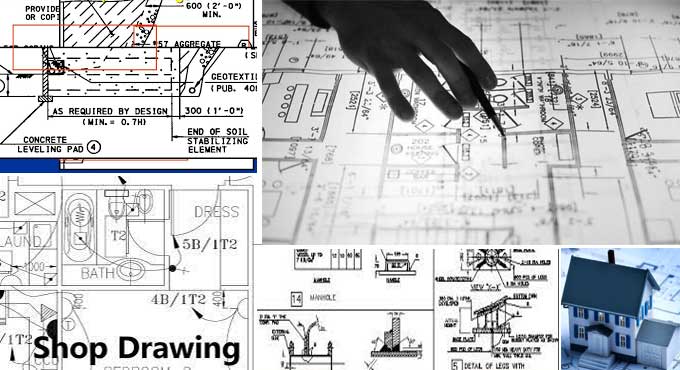
The usefulness of Shop Drawings in the field of Construction
As part of the Construction Document Submittal Process of all construction and restoration projects, shop drawings are often considered as the backbone of any fabrication industry and as an integral part of the fabrication process. As a general rule, shop drawings are drawings that show the dimensions, manufacturing standards, and fabrication details of components that have been prefabricated.
In construction, what is the significance of shop drawings and what are the advantages of using shop drawings? There is no doubt that the construction industry today is getting more rigid as far as economy and risk management is concerned. As a result of the current economic climate, there is a decline in project investments, uncertainties are increasing, and there is always a crisis in time, money, and manpower.
What do you mean by shop drawings?
Shop drawings are precise and thorough representations of the design and plans for a piece of machinery or a structure that is intended to be produced or installed by a fabrication shop.
There is no doubt that the prefabrication drawings, that are often referred to as prefabrication drawings, are extremely important for ensuring that all the components are skillfully fabricated and installed in accordance with all industry standards and codes.
There are a variety of prefabricated components that can be found in shop drawings, from steel beams, trusses, and concrete panels to elevators, appliances, cabinetry, ductwork, electrical layouts, and more.
In comparison to design and construction drawings, shop drawings are more detailed and precise and represent the phase of prefabrication following the development of design drawings and specifications. They contain a lot more detailed and precise information than design and construction drawings.
Why is Shop drawings important and what are the benefits of shop drawings?
- The purpose of shop drawings is to enable us to obtain a CAD model that is accurate, to optimize the construction schedule, to obtain accurate cost estimates & quantity take-offs, to improve production quality, and to ensure efficient handover. Consequently, this enables cross-functional collaboration and communication to be carried out more efficiently.
- Provides stakeholders with an easy and comprehensive way of understanding the information.
- The purpose of shop drawings is that they help in the definition of roles and responsibilities among the stakeholders and improve coordination, which decreases risk and liability on the project.
- Enhances the accuracy and rigour of engineering analysis and design.
- In the construction and restoration industries, construction document submissions are a crucial part of the construction process.
What are the specifications of shop drawings?
Shop drawings must have the following specifications:
- Title and number of the project.
- The date on which the drawing was first drawn, as well as the dates on which the following revisions were made.
- This is a detailed CAD drawing of the prefabricated component, often showing it from a variety of angles.
- This data that includes the dimensions of the component, the specifications of the material, the manufacturing protocols, and the specific instructions for fabricating the component.
- Step-by-step instructions, a diagram of connections, and a list of materials required for successful installation of the component, such as step-by-step instructions, diagrams, and supporting materials.
- A detailed description of how the prefabrication design addresses the original design and construction requirements.
- The original design and construction documents should be noted if any changes have been made.
- Before the component can be fabricated and installed, any key dimensions must be reviewed and verified at the job site.
What are the applications of Shop drawings in the Architectural Engineering and Construction industry?
- Fabricators' versions of components are compared with original construction documents and designs by architects and engineers.
- To ensure that every concrete reinforcing bar is manufactured correctly, structural engineers use shop drawings.
- In order to gain approval from the design team on the selection of final materials, manufacturers use shop drawings to understand materials, and dimensions, and also to gain clarity on materials and to fabricate components, instructions are required.
- Building clashes can be proactively detected prior to fabrication and construction through coordination and collaboration with BIM information.
- Shop drawings are used by MEP (Mechanical, Electrical, and Plumbing) specialists to plan the installation of components such as ductwork, electrical panels, and piping systems.
Use of shop drawings in concrete reinforcement
It is important to note that concrete reinforcing is one of the many items that need to be fabricated using specialized shop drawings. A 60-foot-long reinforcing bar is a custom fabricated for concrete reinforcing. These reinforcing bars are cut and bent to fit a specific configuration. Reinforcing bars are listed in quantities, sizes, lengths, and shapes on the shop drawing and accompanying a cut sheet.
To get more details, watch the following video tutorial.
Video Source: Iram Hameed Rather


